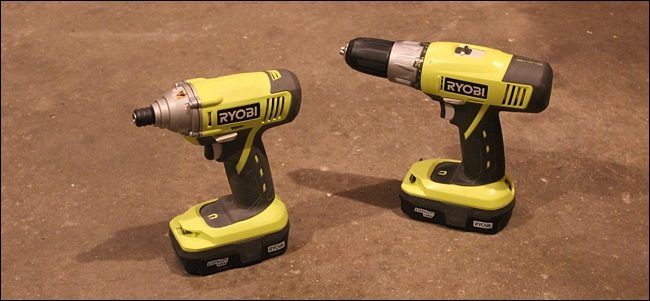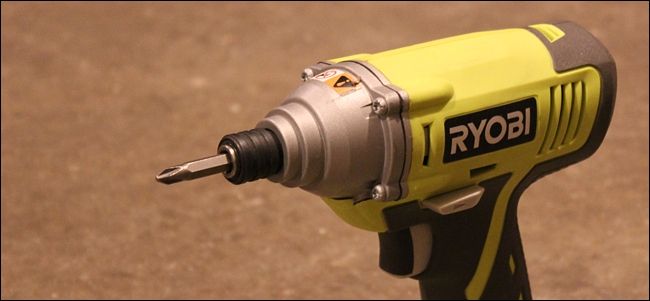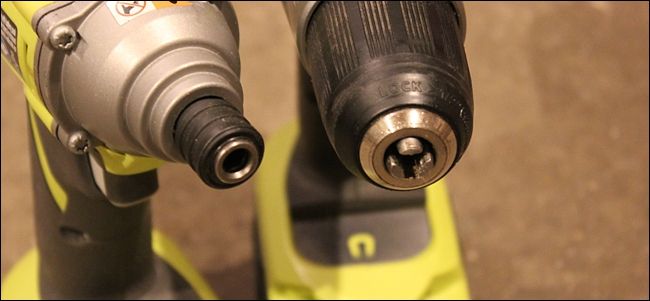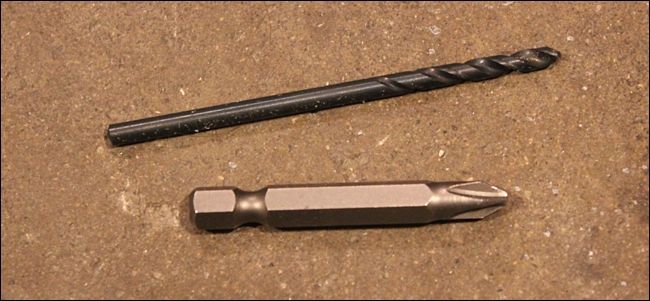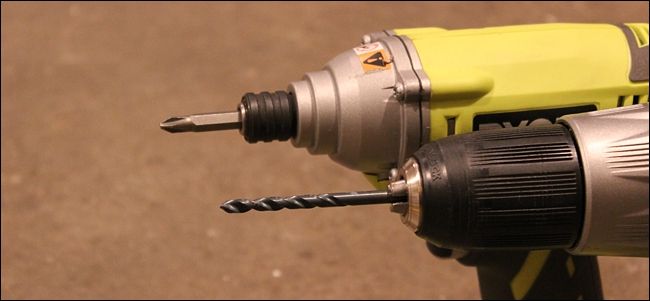Quick Links
When it comes to home improvement projects, a power drill is one of the most common tools you'll need. But an impact driver is perhaps an upgraded version that you should consider adding to your arsenal.
Power drills and impact drivers are similar tools: both look a lot alike, and they both are able to drive screws into different materials. However, impact drivers make the work a lot easier.
What Impact Drivers Do
Here's the main difference: Impact drivers utilize the same rotational motion that power drills use, but as you're driving in a screw, impact drivers also mix in a hammering action that not only hammers down, but sideways. This makes it way easier to drive screws into tough materials, and it prevents the drive bit from slipping off the screw head, which could potentially strip the head and ruin the screw.
If you've ever heard an impact driver in action, then you've probably noticed this in the form of a really loud, repetitive clicking noise that it makes as it's driving in a screw. That's the noise of the hammering action, and it occurs dozens of times per second, depending on how fast you're driving in the screw.
With a power drill, you'd normally have to apply a lot of pressure in order to prevent the drive bit from slipping, but the hammering action of impact drivers mostly prevents this, and all you have to do is apply enough pressure to keep the screw guided and on point.
Impact drivers are also great for removing stubborn screws or bolts when reversing the spin direction. The hammering action can make it easier to remove fasteners that corroded or were over-torqued.
What Impact Drivers Can't Do
If you end up getting an impact driver, it's important to know that there are a few small disadvantages compared with power drills.
First off, impact drivers really shouldn't be used for precise drilling---your power drill will always do a better job at that since you don't want a hammering action when drilling. Plus, power drills have a chuck, which is a device on the end of the drill that consists of claws that can open and close to accept all different sizes of drill bits. Impact drivers have a quick-change sleeve that only accept bits with 1/4-inch hex shanks. You can find drill bits with hex shanks, but they're few and far between.
Power drills also have two gears: one that's slower with more torque for driving in screws, and a second gear that's faster for drilling holes. Impact drivers only have one gear, so you have to be a bit more precise with the variable-speed trigger if using an impact driver.
Power drills also have a clutch, which is similar to having a built-in torque wrench of sorts. It allows you to drive in a screw, without accidentally tightening it down so much that it blasts through the material. Instead, you can set it to a number and when it gets to a certain torque level, it will stop driving. Impact drivers don't have clutches, so you're at the mercy of your own strength and precision.
Use Both for the Best of Both Worlds
Contrary to what you might think, power drills and impact drivers actually complement each other rather than compete, so it's best to have both tools in your tool box if possible---power drills are great for drilling and impact drivers are great for driving. In fact, many tool manufacturers sell power drill and impact driver combos, like this one.
With that in mind, I always like to have a drill bit ready to go in my power drill, with a drive bit ready to go in my impact driver. That way if I'm drilling a lot of pilot holes, I can drill them using my power drill and then just quickly switch to my impact driver to drive in the screw---no need to constantly change bits in my power drill.

